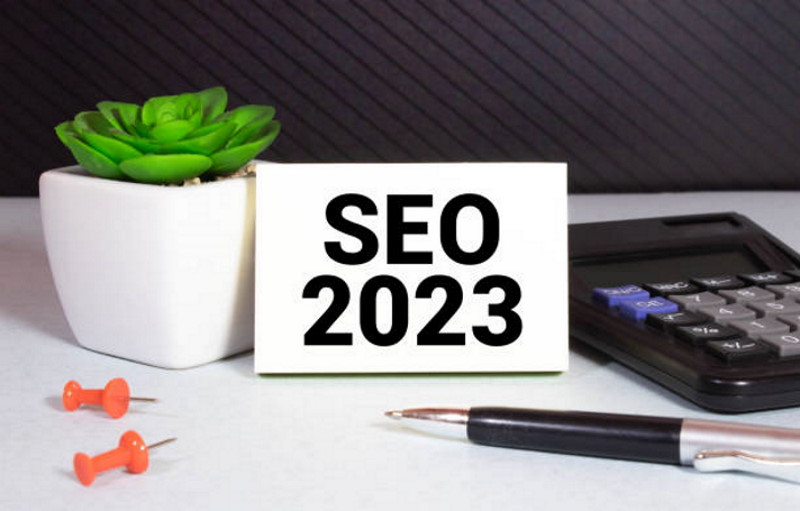Coming up with a cohesive SEO strategy in the era of ChatGPT and AI can be a daunting task. Many businesses wonder if optimisation is even necessary when artificial intelligence dominates the digital search landscape. How can SEOs and businesses keep up with the rapid pace of change in this landscape?
Traditionally, Google engineers have been tight-lipped about significant changes. They have no interest in sharing industry secrets or divulging the inner workings of their algorithm changes. While they occasionally release white papers and blogs, there’s still much we don’t know. Therefore, it’s crucial to work with the information we have and future-proof our SEO strategies. Here are some areas to focus on for future-proofing your SEO in 2023 and beyond.
Don’t Shy Away from AI, but Use It Effectively Google doesn’t dislike AI, but they do consider content created solely by AI to be of low quality or spam. This judgment is valid because current AI capabilities don’t allow language-learning databases to match human speech.
As AI continues to learn, publishers cannot rely solely on it to do all the work. Some SEOs reported being negatively affected by algorithm changes last year, with some even selling their web properties due to the significant impact. However, a common factor among these properties was the lack of effort put into creating good content.
Relying too heavily on AI-generated content and blindly trusting the optimisation process led to low-quality content. Consequently, Google had the right to de-rank those pages as they provided no value. This doesn’t mean you should avoid SEO tools and AI for content creation. The key is to continue creating content the traditional way by focusing on creating content that people love. The optimisation process should always come after the writing of great content.
Is Google Ending the Era of Backlinks? Google recently hinted that backlinks might not carry the same weight as before. While this statement may cause panic among SEO vendors, it’s not entirely new. Google periodically updates its algorithm to ignore certain links, rendering them ineffective. However, the AI learning process takes months or even years, resulting in uneven development across searches when new algorithms are rolled out. Additionally, Google doesn’t announce every update.
Does this mean backlinks are dead? Not exactly. However, if you’re trying to achieve better rankings through link schemes without serving your customers or audience, you shouldn’t expect positive results. Google makes it challenging for businesses to rank if they don’t provide good content and make efforts to reach their customers. That’s why social media isn’t a direct ranking factor for Google; they focus on what you offer on your website.
Earning quality backlinks by doing a good job is still valuable. So, the bottom line remains the same: focus on acquiring quality backlinks through earned efforts. This doesn’t represent a significant change, so there’s no need to despair. Backlinks are still important, but it’s crucial to think carefully about their source.
Make Your Website Practical and Efficient There’s a constant emphasis on improving UX/UI and user-friendliness, but determining how to enhance your website can be challenging. If you haven’t considered usability recently, the following points should inspire you:
Improve Your Site’s Speed
Page load times directly impact visitors, especially those who only intend to scan your site. If you fail to engage them quickly, you risk losing potential customers. Additionally, slow loading times negatively affect search engine optimization, as Google considers this a significant factor in determining search results.
To prevent customers from leaving your site and switching to competitors, you need to make your website faster. Test your site on different devices, not just your own, as your device may have cached website files. Consider the following:
- Use minimal HTML, CSS, and JavaScript to reduce server load.
- Enable compression to reduce the size of page elements.
- Optimize the loading time of visual assets.
- Minimize page reloads.
- Eliminate unnecessary extras and gadgets. Instead, check your site’s functionality using third-party tools like PageSpeed Insights.
Maintain Current Standards To tap into users’ ingrained muscle memory, adhere to established standards. For example:
- Make the logo in the header clickable, leading back to the homepage. This provides a familiar way for users to start over or find their way back.
- Differentiate sidebars from the main text by ensuring the background around them isn’t too white.
- Use clear and simple text for navigation buttons, allowing visitors to easily identify and understand them.
- While some experimentation is acceptable, readability should never be compromised, even when exploring different design elements.
- CMS platforms often offer ready-made footers that can help guide lost visitors back on track.
Ensure Your Site is Indexed Visitors come to your website with specific goals in mind. To facilitate their search, implement search fields. One of the best free tools for this is Google Custom Search, as it utilizes Google’s search engine. For smaller blogs, keyword tag clouds can also be helpful. Custom searches provide valuable insight into what people are looking for, benefiting both you and your visitors.
Reduce Page Complexity Overcrowded websites discourage visitors, causing unpleasant experiences like dealing with pop-ups and inefficient widgets. On the other hand, professional-looking sites tend to build trust. Simplify your site’s layout by reducing complexity. For instance:
Avoid cluttering sidebars with excessive ads and competing calls to action.

